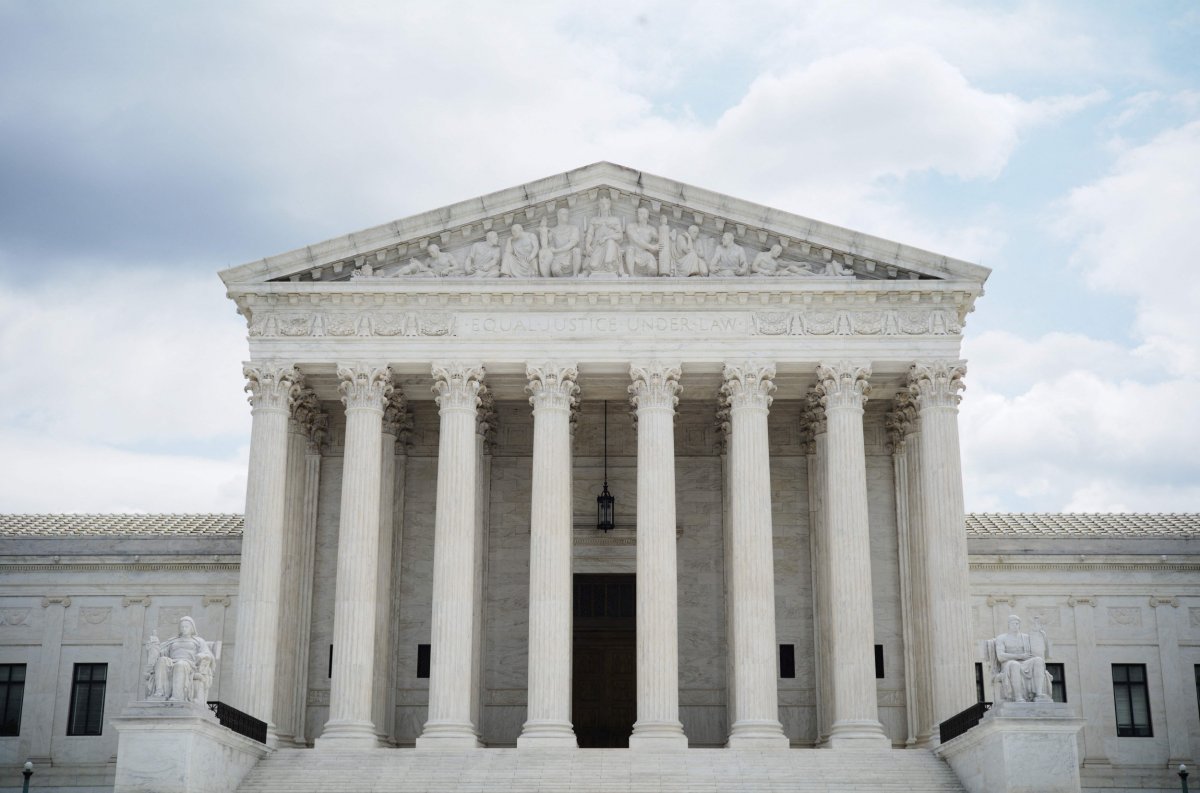This was an important year for religious liberty at the U.S. Supreme Court. But except for those watching the Court's decisions quite closely, what's new was easy to miss. The future of free exercise litigation looks quite different than the future many religious liberty advocates had hoped for a year ago. Still, it is a future full of promise for those who would support broad judicial protection for First Amendment religious liberty rights.
Narrowing free exercise: Smith versus strict scrutiny
This year, many thought that the Supreme Court was poised to abandon Employment Division v. Smith, a much-reviled decision from 1990. In Smith, members of the Native American Church argued that a law banning use of the drug peyote burdened their religious exercise (they used peyote in sacramental rituals). At the time, courts applied strict scrutiny to government policies burdening religion. Strict scrutiny meant that if the government couldn't provide a compelling justification for the burden on religious exercise, then the religious practitioner would win. But drugs and religion are a heady combination and it proved enough to convince the Supreme Court to rewrite its Free Exercise analysis.
Justice Antonin Scalia wrote the opinion of the Court. No longer would the Court apply strict scrutiny simply because a law or government action burdened religious exercise. Instead, Smith held that neutral laws that were generally applicable didn't raise any Free Exercise issue, even if they incidentally burdened religious exercise. Only outright discrimination against religion would trigger strict scrutiny. A general law banning drug use was fine and wouldn't be put through the wringer of strict scrutiny analysis. Strict scrutiny would only apply if the law singled out religion for worse treatment (for instance, a proscription of "sacramental use of peyote"). Compared to a system where strict scrutiny applied whenever religious exercise was burdened, this was a major jurisprudential shift.
The reaction against Smith
Smith was immediately criticized by conservative religious believers and liberal civil liberties advocates alike. Congress overwhelmingly passed the Religious Freedom Restoration Act (RFRA) in 1993, restoring strict scrutiny protections for religious exercise in some contexts. But RFRA is a statute and it can only do so much. It couldn't change the Court's interpretation of the First Amendment's Free Exercise Clause itself.
This year, in Fulton v. Philadelphia, the Supreme Court seemed poised to abandon Smith and reinstitute the prior standard of strict scrutiny. A Catholic adoption agency, Catholic Social Services (CSS), had religious objections to placing children with same-sex couples. The city of Philadelphia said that this violated its anti-discrimination policy and that it would no longer refer children to the adoption agency. A lower court said that there was no free exercise problem because Philadelphia's anti-discrimination rule was neutral and generally applicable—thus, under Smith, not a problem. When the Supreme Court agreed to hear the appeal, it had the chance to overrule Smith.
Rereading Smith in Fulton
In its decision in Fulton, the Supreme Court unanimously held that Philadelphia had violated CSS's rights. But it didn't overrule Smith. Philadelphia had retained for itself the ability to provide exemptions from its rule; it just didn't give one to CSS. A majority of the Court concluded that this made the law no longer "generally applicable" and no longer in Smith's safe harbor, thus necessitating strict scrutiny.
To the surprise of many observers, Justices Brett Kavanaugh and Amy Coney Barrett voted to retain Smith. Only three justices (Clarence Thomas, Samuel Alito and Neil Gorsuch) wanted to scrap Smith. Last week, the Supreme Court declined to hear another case that would have provided it with a chance to reconsider Smith in a less politically charged setting. So it appears Smith isn't going away anytime soon.
Most of the commentary on Fulton focused on one of two points: first, that the Court was unanimous; second, that the Court refused to overrule Smith.
A third significant issue has been much less discussed: how broadly the Court interpreted Smith's general applicability requirement to protect religious claims. The way that the Court is now interpreting Smith, it doesn't take much to trigger strict scrutiny. Yet this rereading of Smith was actually already old news by the time Fulton was decided.
Religion's most favored nation status
Earlier this year, the Supreme Court announced its new reading of Smith without fanfare in Tandon v. Newsom.
Tandon was one of many cases challenging COVID-19 restrictions on religious services. At the point in the pandemic Tandon was decided, California capped "social gatherings"—including small church groups and Bible studies—at three households, whether indoor or out. But commercial activities had entirely different rules. For instance, barbershops could have 10 people from 10 different households indoors at a time that a church group meeting outdoors couldn't have even half that many households represented. By the time Tandon reached the Supreme Court in April, the Court had already decided that several sets of COVID-19 regulations were unconstitutional infringements on free exercise. But Tandon was the case in which the Court most clearly spelled out the rules.

Remember that under Smith, laws that are neutral and generally applicable are fine. But a law that targets religion is not neutral. And in Tandon, the Court held that laws with exceptions are necessarily not generally applicable. Where a law has exceptions, and religious exercise doesn't get the benefit of an exception, then the law triggers strict scrutiny. California's COVID-19 regulations had all kinds of disparities in treatment, with some activities getting more favorable treatment than religion. So the Court applied strict scrutiny and granted an injunction against California's regulations. As one legal scholar put it, Tandon stole Fulton's thunder.
The Fulton majority's statement of the doctrine was to the same effect. In Fulton, the city had the option of providing discretionary dispensations from its policies, but it didn't give one for religious exercise. Again, the Court said that the law wasn't generally applicable, triggering strict scrutiny.
The future: strict scrutiny and Smith
What does all of this mean for the future of Free Exercise Clause litigation? First, Smith will be with us for some time. Second, Smith is going to be applied in ways that are much more protective of religion than was previously the case. Because with the "most favored nation" version of Smith, strict scrutiny will come up regularly. Exceptions and administrative discretion are widely pervasive in today's complex regulatory systems. When those regulations interfere with religious exercise, the courts will have to apply strict scrutiny. And the application of strict scrutiny was what proponents of reversing Smith sought the whole time. It turns out, they got pretty far toward that goal, but by an unexpected means.
But all of that is only true if (a) the Supreme Court is serious about what it said in Tandon and Fulton, and (b) regulators don't figure out creative ways to navigate around Tandon and Fulton.
How serious was the Court? Two clues suggest that it may not have thought it all through yet. Tandon was on the Court's orders docket, rather than its regular merits docket. This means it was decided on an expedited basis, without the oral argument and full legal briefing given to a merits docket case. Second, the Fulton majority didn't cite Tandon despite its clear relevance.
Could this suggest that there's some concern on the Court that Tandon went a bit too far? Maybe, but it's probably just as much a result of the composition of the Fulton majority. Tandon was a 5-4 decision, but Fulton was unanimous as to the result. Keeping references to Tandon out of Fulton was presumably helpful in cobbling together the Fulton coalition. That leaves five votes presumably happy with the results in both cases.
Meanwhile, regulators might, in at least some settings, get around strict scrutiny by just eliminating exceptions for everyone, as Justice Alito worried in his separate concurring opinion in Fulton. But that probably won't be so easy. Regulators who are intent on avoiding the strict scrutiny that comes with exceptions would have to deliberately eliminate all exceptions. And that would often come out looking like targeting of religion, which would run afoul of the other prong of Smith. Remember, if there is one thing that has long been settled under Smith, it is that government cannot deliberately target religion. (It was a stray comment suggesting that a regulator was targeting religion that won the case for the religious Colorado baker, Jack Phillips, in the 2018 Masterpiece Cakeshop case.)
In short, the reason for overturning Smith was to get strict scrutiny for regulations that burden religious exercise. But as it turned out, the Court got most of the way there by just reworking Smith. The near future of free exercise litigation will be a new world of strict scrutiny. Litigators will be looking for the loopholes in this new regime—and testing the courts to see whether they seal up the loopholes or are happy to embrace them.
For proponents of religious liberty, it is an unexpected future. Whether its promise is real or illusory we have yet to learn.
Lael Weinberger is a lawyer and historian. He is currently the Olin-Searle-Smith Fellow at Harvard Law School.
The views expressed in this article are the writer's own.
Uncommon Knowledge
Newsweek is committed to challenging conventional wisdom and finding connections in the search for common ground.
Newsweek is committed to challenging conventional wisdom and finding connections in the search for common ground.
About the writer
To read how Newsweek uses AI as a newsroom tool, Click here.








